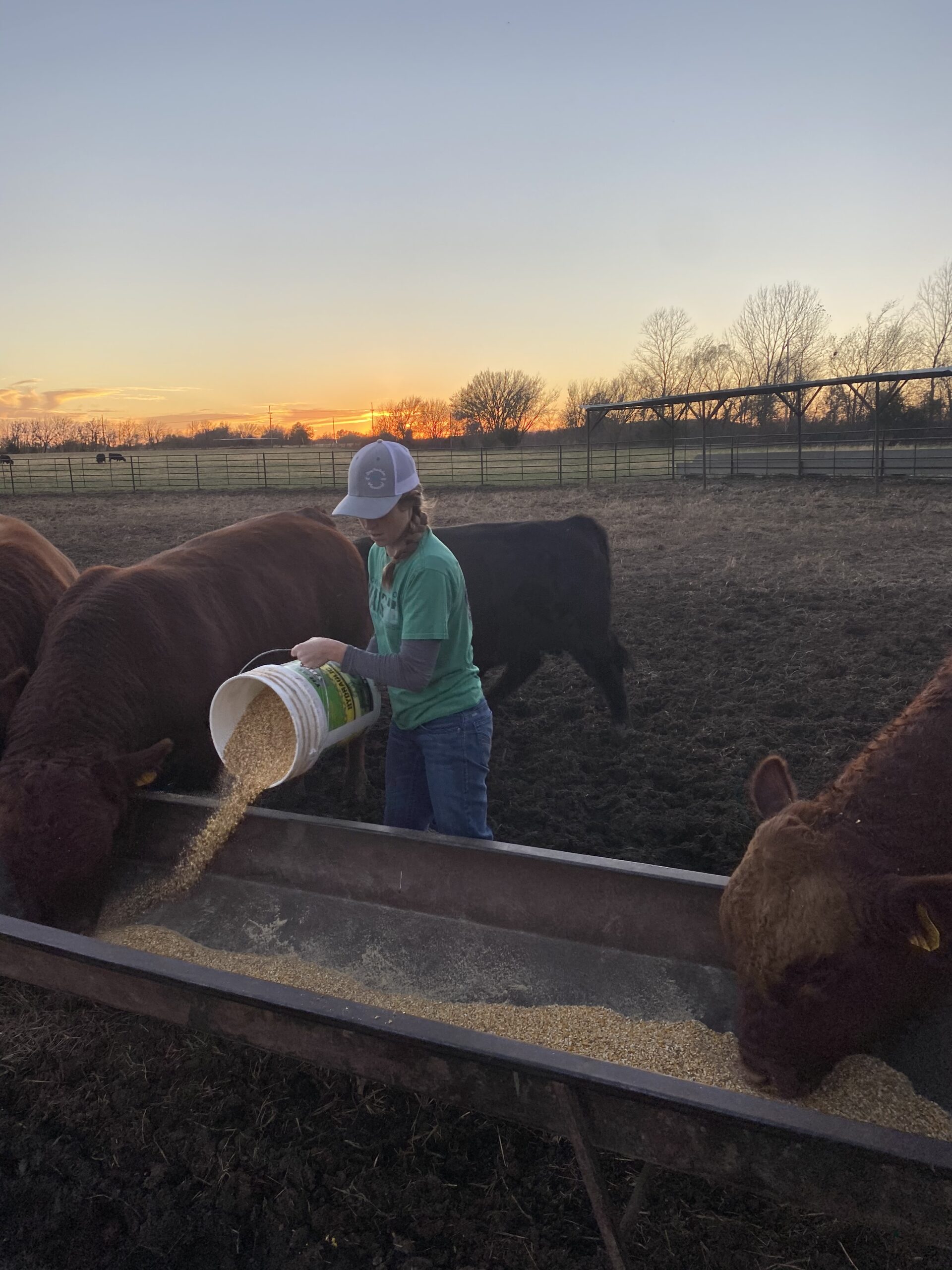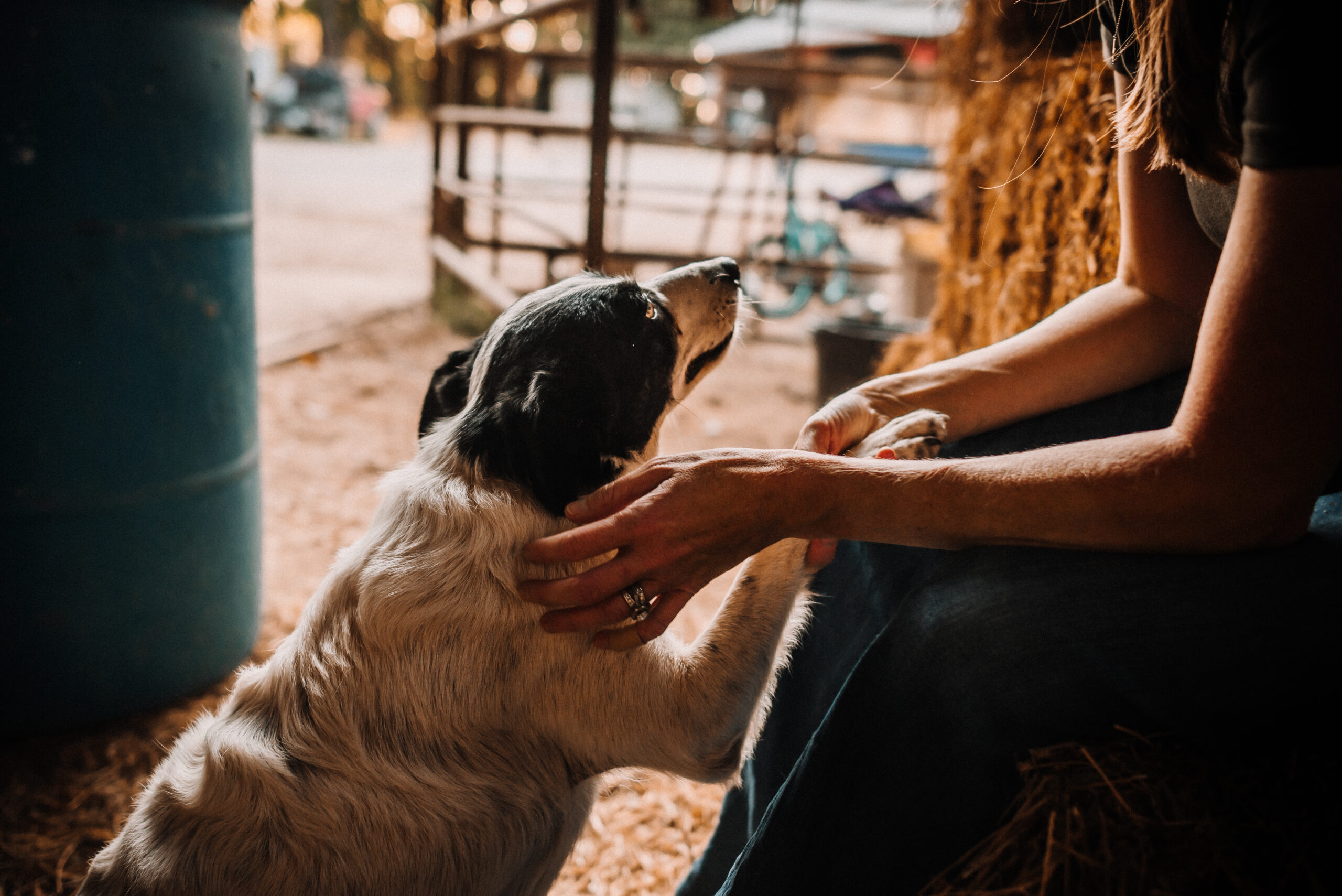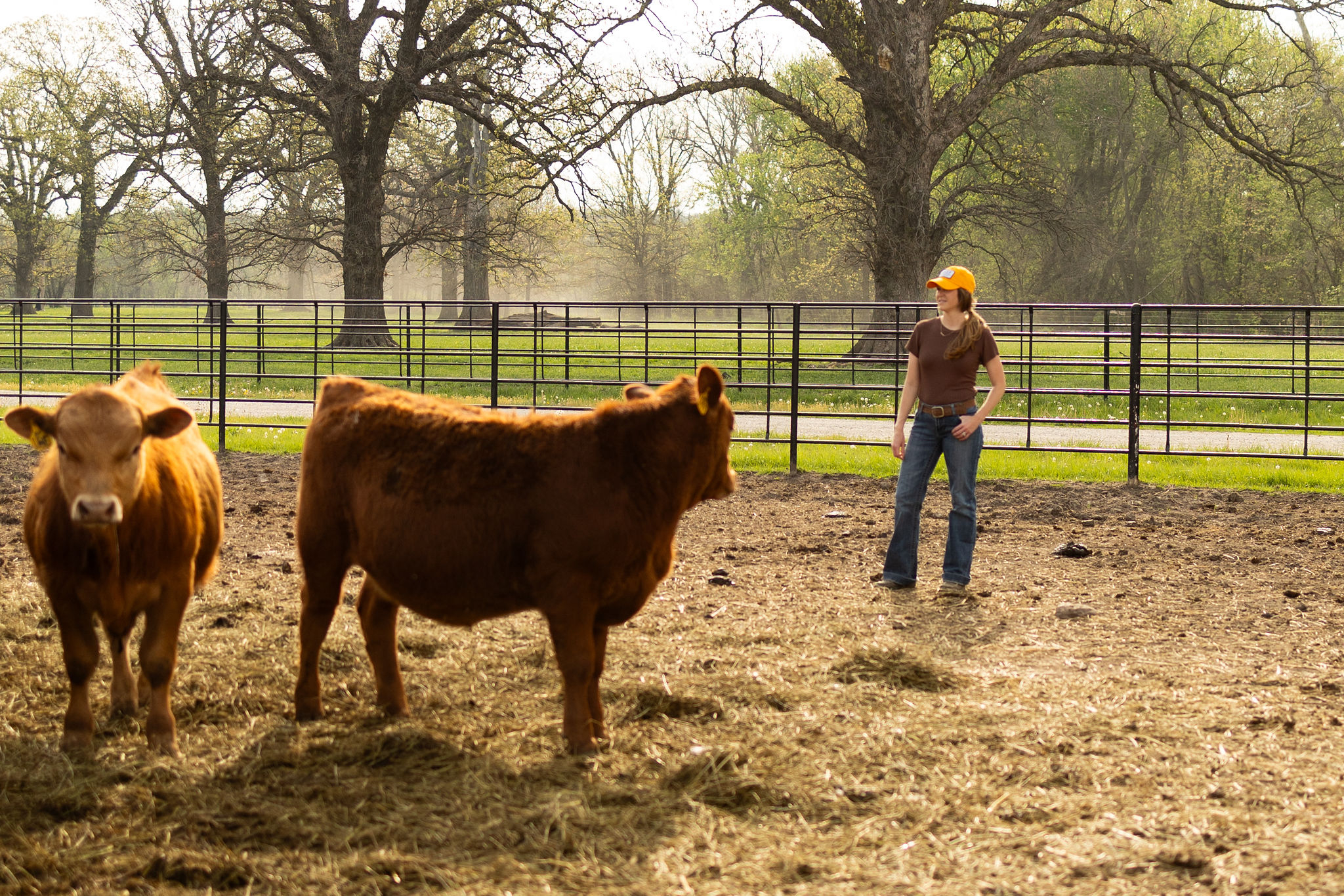
We utilize DDGs to feed our cattle because they are a great source of energy but also because they help us work towards a more sustainable beef industry.
As fall transitions to winter and pastures go dormant, farmers and ranchers are also transitioning the diets they feed their cattle. Because the grass is no longer growing, and cattle still need forage and energy, farmers and ranchers explore several different feed rations. For example, we supplement our cattle with a feed comprising cracked corn, a little bit of molasses and dried distillers grains (also known as DDGs), which are a by-product of ethanol production. Propane-powered grain driers allow for consistent power to dry these grains, which provide our cattle with the energy and protein they need through the winter. We feed DDGs because they are high in protein and help our cattle maintain body condition through the wet, cold winter. Additionally, when we feed DDGs to our fall-calving cows, they are able to use the additional protein to produce more milk for their calves. DDGs are more affordable than other feed sources on a per-pound-of-protein basis and are very palatable for our cattle. For our ranch, it makes sense to take advantage of a large supply of DDGs for economic, animal welfare and herd management reasons.
Propane can be used anytime and anywhere, giving farmers back control over their farm. It does not rely on access to a gas line or the power grid, eliminates the risk of power outages and peak pricing, and provides consistent power regardless of weather, time of day, location, etc. Propane has long been a trusted fuel source because propane-powered grain dryers are 50% more efficient than past models and propane is a clean, efficient fuel source under the Clean Air Act of 1990. Not only is propane extremely versatile on farms, ranches and other agricultural operations, it’s also “American-made,” meaning that 90% of the country’s propane is produced right here in the U.S.A. Without the use of propane, DDGs wouldn’t be a possible food source for our cattle.
We haven’t always had DDGs in such abundance – they weren’t widely available until the requirement of ethanol production in the early 2000s. But as ranchers, we are glad they exist not only for their nutritional value, but they help the agriculture community be more sustainable by cutting down on waste. Producing DDGs is a complex process and involves a lot of steps such as starch separation and fermentation, but one of the key steps is drying the whole corn grain in a propane-powered grain dryer after it’s picked but before further processing.

This propane-powered grain dryer helps us get feed for our cattle.
When I think about the relationship between corn farmers, cattle ranchers and our local propane suppliers, it really opens my eyes to the bigger picture of American agriculture. Whether a business is large or small, animal or plant-based, first-generation or fifth-generation, we all play an important part in producing America’s food, fuel and fiber. We are all connected and if one segment breaks or experiences a challenge, it affects the whole community. I’m thankful for technological developments and new ideas that enable me to raise cattle more efficiently and also use energy and feed sources that help us continuously improve our sustainability story.
What technologies do you utilize on your farm or ranch that are interconnected?
Until next time,
~ Buzzard ~
The opinions and experiences in this post are original and true to my experience. I was compensated for my time by the Propane Council, however the cows, feed and time spent on the ranch is authentic to my daily life.
Want posts in your inbox? Sign up on the homepage for automatic delivery – no spam emails, ever. Additionally, if you want a behind the scenes look at ranch life, rodeo, parenting and all sorts of other fun stuff, follow my Instagram account @brandibuzzard.



